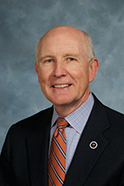
By Lindsay Street, Statehouse correspondent | As the U.S. Census comes to a close likely Oct. 5, state lawmakers are readying for a decennial undertaking in 2021: Picking their voters.
“We believe that, perhaps, South Carolina’s biggest problem in redistricting is not the protection of party but the protection of incumbents,” said Lynn Teague of Columbia, vice president of issues and action for the League of Women Voters of South Carolina. “One way or another, it leads to very few competitive districts.”
With only 18 House and Senate races generally seen as competitive in November out of 170 seats up for reelection, Teague said that too many races are settled in the primary or the incumbent faces no challenger at all.
“People should not be drawing their own lines,” Teague said. “We hope to be able to work with the General Assembly to get a decent outcome.”
The process begins
Redrawing of state and congressional districts usually begins in March or April after the 10-year census, and it rests entirely as the power of the state legislature.
More than 98 percent of households nationwide were counted as of Sept. 29, with 96.5 percent of South Carolina households responding. The U.S. Census count was supposed to officially end July 31, but with the coronavirus pandemic, the deadline to count its population was extended to Oct. 5.
- Millions are at stake for local communities when it comes to the census. Learn more here.
The state uses a list of criteria to draw the districts, including compactness, contiguity, preservation of political subdivisions, preservation of communities of interest, preservation of the cores of prior districts, and avoidance of pairing incumbents (See the 2011 redistricting guidelines here). State law does not require public access or input, but maps can be subjected to gubernatorial veto.
The last redistricting process began in April 2011 and ended in June 2011 for state legislative districts and July 2011 for congressional districts. There were no successful legal challenges to South Carolina’s 2011 maps, although at least four actions were filed.
Picking voters
A source familiar with the process of redistricting called it “the most bipartisan thing” at the Statehouse as lawmakers are said to trade neighborhoods to protect their tenure.
Since the 2011 redistricting, a handful of lawmakers have sought to reform how districts are redrawn with no success. Republicans and Democrats have proposed independent commissions and voter-approved redistricting, but those efforts have stalled and died with each session.

Clemson Republican Rep. Gary Clary, who is not seeking reelection this year and was not in office for the 2011 redistricting process, was one of those seeking to change the process in recent years.
“Voters should pick their representatives rather than representatives picking their voters. When you look at the redistricting process, it’s all about power and maintaining control and that’s what we have in redistricting,” Clary told Statehouse Report. “Leadership is not in favor of independent redistricting … People like the status quo when the status quo benefits them.”
Efforts seeking comments for this story from the offices of House Speaker Jay Lucas, R-Hartsville, and Senate President Harvey Peeler, R-Gaffney, went unanswered.
‘Continue to fight the fight’
Teague said her organization will work with experts at Clemson, the University of South Carolina, and AARP to obtain the same software that the state is using to draw its districts. With that software, the league will generate its own maps using population data “to inform the public very closely what is happening with their districts,” she said.
 The league found the 2011 redistricting did not violate partisan gerrymandering rules — something that tripped up North Carolina’s redistricting effort — but it did protect incumbents.
The league found the 2011 redistricting did not violate partisan gerrymandering rules — something that tripped up North Carolina’s redistricting effort — but it did protect incumbents.
Teague said incumbent protection leads to polarization and fewer compromises in government, and also means lawmakers don’t have to listen to a variety of voices that represent America.
“We think competitive districts are a good thing and we have very few of them at the moment,” Teague said. “Voters should have a choice. They shouldn’t go into the polling place in November with no meaningful choice.”
Clary said it comes down to power.
“I’ve never been in the map room where they draw the lines, but I do know enough about it that if I can go in and adjust my line, that’s closely akin to a lawyer being able to put his finger on the scales of lady justice,” said Clary, a former circuit court judge. “It all boils down to no one is willing to give up the power they wield in being able to draw these districts.”
And, he added, don’t expect the courts to wrest control of redistricting from the legislature.
“Unless there is some flagrant disregard of criteria used for drawing district lines then the courts are not going to intervene unless there is some sort of egregious attempt at gerrymandering,” Clary said.
To his colleagues interested in changing the system, Clary offered this:
“Continue to fight the fight. It’s an uphill battle. As the old saying goes, it’s swimming upstream. Unfortunately, I do not see any change that’s going to be made there.”
- Have a comment? Send to: feedback@statehousereport.com















 We Can Do Better, South Carolina!
We Can Do Better, South Carolina!
Thank you so much for this excellent report.
Rep Clary will be sorely missed.
Hopefully Lynn Teague will be shining light on these important issues for many years to come.